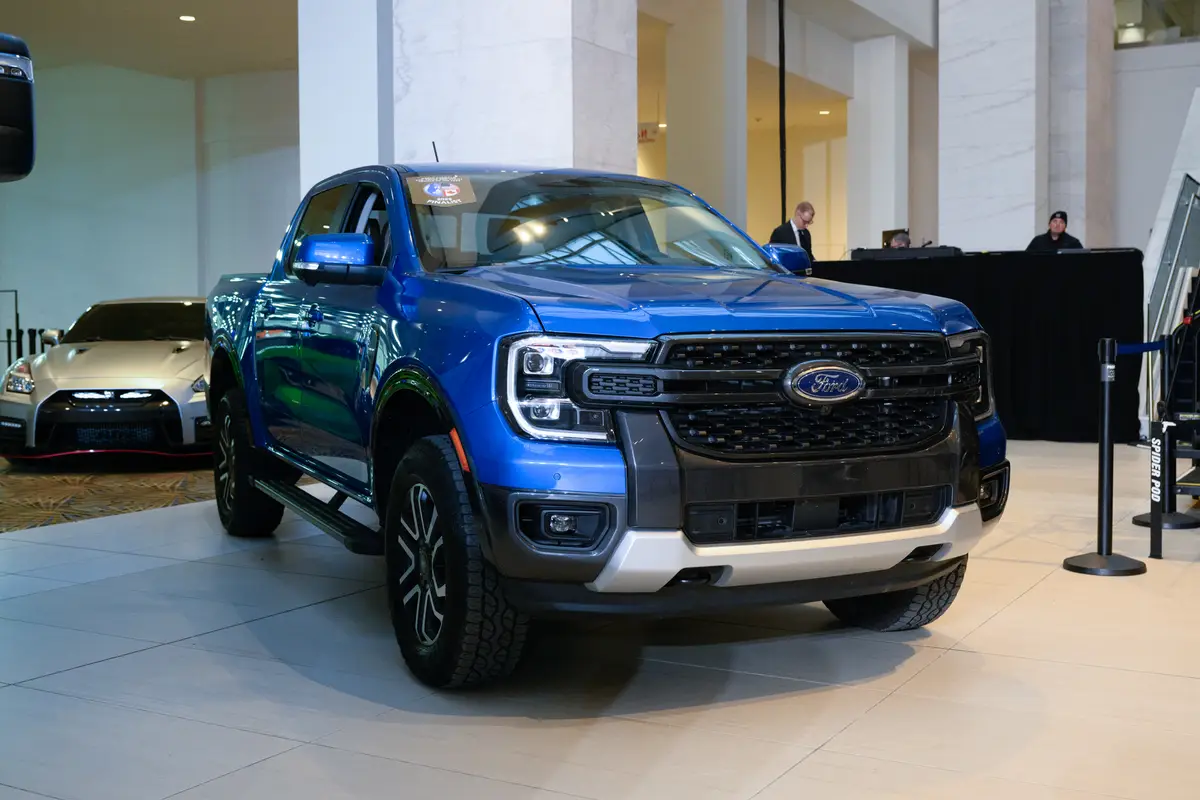washingtonpost.com's view
Better, but Not Yet Best
2004 Dodge Durango
My natural inclination is to applaud students who progress remarkably over previous performance. In that spirit, I am tempted to heap praise upon the 2004 Dodge Durango sport-utility vehicle.
But restraint sometimes is the better part of approbation. The “Yes, but” factor must be considered. That element weighs heavily here.
Yes, the new Durango is larger in all respects than was its predecessor, which was introduced in 1998. It is better screwed together. DaimlerChrysler Corp., the Durango’s maker, has even managed to diminish the once-ugly gap between the bottom of the SUV’s rear hatch door and its back bumper.
Ride, handling and overall steering-feel have improved greatly. It has become a cliché in auto-review parlance to say an SUV rides like a sedan. Nonetheless, the new Durango, despite its hefty curb weight of 4,671 pounds, comes close to that ideal.
Curb weight is the poundage of a retail-ready vehicle. It includes fluids in reservoirs such as the gasoline tank; and it takes in all original equipment, such as brakes, installed on the vehicle. Curb weight does not include the driver, passengers or their cargo.
Weight can be the enemy of good handling, how a vehicle moves down the road and around curves. That is especially the case in a truck-based SUV with a lousy structure and suspension. That happily is not the case with the Durango.
The new model sits atop a super-strong steel frame, which allows the Durango to carry a payload — passengers and their stuff — of 1,780 pounds. That’s one of the best payload ratings for an SUV in the mid-to-full-size range. The new Durango also can tow a trailer weighing 8,900 pounds.
Dodge uses an independent front suspension to help carry and pull those weights with minimum body wiggle or similar handling misbehavior. Other SUV manufacturers also employ an independent suspension in the rear of their vehicles for more confident handling.
But DaimlerChrysler and Dodge executives say that the more traditional rear solid axle and coil springs they’ve chosen for the 2004 Durango are better suited to its mission — which is to tow heavy loads safely, reliably.
That might be so. But the use of that solid axle compromises rear interior space, especially in the vicinity of the third-row seat, which is something of a disaster. It is among the worst third-row seats I’ve dealt with in an SUV.
Sitting in that seat is like sitting on top of a hump, even for small people. Getting the Durango’s third-row seat to fold flat is a bit of a chore, especially in comparison with the automatic-fold-and-raise third-row seat used in the Ford Expedition.
Once the Durango’s rear seat is down, it still presents a hump, frustrating attempts to make the load floor completely level.
Also, apparently in an attempt to emphasize the Dura ngo’s toughness (as if the big, wonderfully in-your-face, cross-haired grille wasn’t enough), Dodge endowed the SUV with tumescent ceiling pillars. They are ugly and intrusive. I would have preferred something more sophisticated, less prominent.
But an ample array of options — a DVD screen, a power sunroof and leather-trimmed seats, among other items — can be ordered to turn the Durango’s cabin into something more likable and livable.
Ordering the Durango without its less-than-impressive, split-folding third-row seats might also be a good idea. If you really need seating for seven, just bite the image bullet and buy a minivan. The Chrysler Town & Country would be a good choice.
As for the new Durango, it is mostly a job well done. It could have been done better had DaimlerChrysler concentrated on making the Durango one thing — a good five-passenger SUV — instead of trying to make it double as a minivan and school bus.
Nuts & Bolts
Downside: Less-than-impressive interior design.
Head-turning quotient: Big, bold, high and unmistakably mighty.
Engines/transmissions: There are three engines, including a 210-horsepower, 3.7-liter Magnum V-6; a 230-horsepower, 4.7-liter Magnum V-8 (in the tested Durango SLT four-wheel drive); and the super-boss 5.7-liter, 345-horsepower HEMI Magnum V-8. The V-6 gets a standard four-speed automatic transmission. The V-8 models get five-speed automatics.
Ride, acceleration and handling: Easily among best in class for mid-to-full-size SUVS.
Capacities: The Durango has seating for up to seven people. Maximum payload is 1,780 pounds. Maximum tow rating is 8,900 pounds. Fuel capacity is 27 gallons. Regular unleaded gasoline is recommended.
Mileage: In the tested 4.7-liter, four-wheel drive SLT V-8, I averaged 17 miles per gallon in mostly highway driving carrying light loads.
Safety: Passenger-sensing side bag for front-seat passenger. It automatically deactivates if a small body is detected in that seat. Available curtain/head bags.
Trim lines: The Durango is offered as the base ST, luxury SLT and super-luxury Limited. It is available with rear-wheel drive or four-wheel drive.
Price: Base price on the tested Durango SLT is $30,945. Dealer invoice on the base model is $28,256. Price as tested is $32,590, including $1,000 in options and a $645 destination charge.
Purse-strings note: For best enjoyment, order without third-row seats. It’s a strong “buy,” but options can be pricey. Compare with any mid-to-full-size SUV.
Latest news



